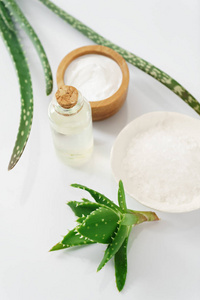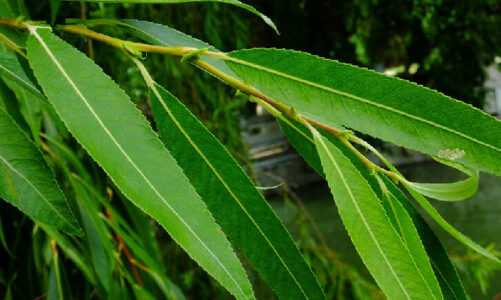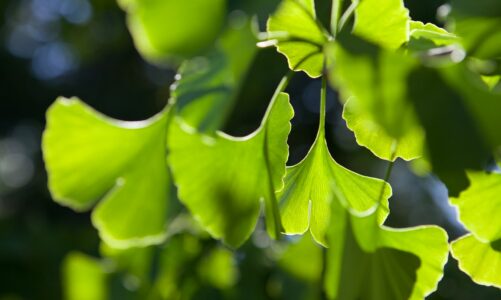The development trend of cosmetics in the world today is to advocate green, environmental protection and safety, and to pursue efficacy. Therefore, in the past ten years, the use of mild and effective Chinese herbal extracts as natural additives in cosmetics has become a hot spot in the development of new products. Cosmetics around the world are fashionable with the addition of natural medicinal plant extracts.
Main Classification and Benefits of Natural Medicinal Plant Extracts Commonly Used in Beauty Cosmetics
Proteins, peptides and amino acids
Such substances have a wide range of cosmetic effects, such as nutrition, repair, emollient, moisturizing, whitening, anti-allergy, anti-aging, antibacterial, and freckle removal. Chinese herbal medicines containing such substances include ginseng, angelica, astragalus, poria, rehmannia, jujube, dandelion, asparagus, pollen and more.
Hormones and enzymes
Hormones can regulate and control the growth, development, metabolism, aging and other life processes of the body. Different hormones have different effects. For example, gibberellic acid, one of the plant hormones, has a significant function of inhibiting the activity of melanocytes and exists in the germ of many plant seeds. Enzymes have catalytic activity, and different enzymes have different functions. For example, lipase can decompose oil, and it can be used in cosmetics to clean and eliminate fat. It exists in castor seeds.
Carbohydrate
Carbohydrates have a wide range of cosmetic effects. For example, astragalus polysaccharide is an immune enhancer; velvet antler polysaccharide can resist ulcer; mushroom polysaccharide can heal wounds, anti-inflammatory, and anti-tumor; chitosan has excellent moisturizing function; liver sugar has moisturizing and nutritional effects; hyaluronic acid can delay skin aging . Chinese herbal medicines rich in sugar include yam, Polygonum multiflorum, Rehmannia glutinosa, Polygonatum chinensis, white fungus, jujube and so on.
Organic acids
There are many types of organic acids, various chemical structures, and various cosmetic effects. For example, azelaic acid has skin penetration, and has the effect of freckle and acne removal. Fruit acid can soften the stratum corneum of the epidermis, remove dead cells in the outer layer of the skin, whiten and freckle. Linoleic acid can inhibit tyrosinase activity and has moisturizing, anti-allergic and sunscreen effects. Ferulic acid has anti-oxidant and ultraviolet absorption effects.
Organic acids are widely found in plants, especially in sour fruits, such as ebony, papaya, lemon, apple, raspberry, hawthorn, walnut, pepper and more.
Alkaloids
Alkaloids, which are a class of nitrogen-containing organic compounds, have properties similar to bases, and most of them have significant physiological activity. For example, Tetrandrine has antibacterial, anti-inflammatory and anti-allergic effects; allantoin can promote water absorption of skin and hair, and soften keratin; matrine can inhibit the activity of tyrosinase. Alkaloids are widely found in various Chinese herbal medicines, such as Coptis chinensis, Cortex phellodendri, Lotus Seeds, Paeonia lactiflora Pall. , Astragalus, Dictamni Cortex and so on.
Saponins
This is a kind of more complex glycoside compounds, and its active substance has a wide range of cosmetic effects. For example, asiaticoside can promote wound healing and stimulate granulation growth; loofah saponin can improve cell activity and heal wounds, has antibacterial, anti-inflammatory, and stimulate hair growth; camellia saponin can delay skin keratinization and can eliminate dandruff and prevent hair loss. Saponins are also widely found in Chinese herbal medicines, such as ginseng, Radix platycodonis, licorice, Centella asiatica, Radix Bupleuri, Gynostemma.
Flavonoids
Flavonoids show strong absorption of ultraviolet and visible light, have antioxidant properties, lower blood lipids, anti-inflammatory, antibacterial and other effects. For example, baicalein has antibacterial, anti-inflammatory and anti-allergic effects and can strongly absorb ultraviolet rays; phloretin can reduce the secretion of sebum and so on. There are many Chinese herbal medicines containing flavonoids, such as: honeysuchle, Scutellar, mulberry leaves, sophora japonica, pueraria, pine leaves, Platycladus orientalis.
Phenols and quinones
Simple phenolic derivatives are volatile and are part of essential oils, while most of the more complex phenolic derivatives have significant biological activity. Such as Magnolia, ginger, Polygonum multiflorum, turmeric, paeonol, bearberry. all contain phenolic compounds. Quinones have a wide range of physiological activities. For example, jugone can inhibit bacteria, inhibit the activity of testosterone 5ɑ-reductase, thereby preventing hair loss. Aloe vera can strongly absorb ultraviolet rays, moisturizing, skin care. Comfrey, madder, Paeonia lactiflora Pall., Polygonum multiflorum. Chinese herbal medicines contain quinone compounds.
Terpenes
This is the largest class of hydrocarbon compounds in natural substances, and has a variety of physiological activities. The essential oils of Chinese herbal medicines are mostly terpenoids, such as orange peel, Paeonia lactiflora Pall., perilla, seaweed, Cyperus rotundus, cloves, all contain terpenoids.
According to the chemical composition, pharmacological action and physicochemical properties of natural medicinal plant extracts, it is added to various cosmetics with monomer components, which can be called cosmetics containing natural herbal ingredients. However, it should be noted that whether natural medicinal plant extracts are added to cosmetics as a monomer or a prescription as an active ingredient, the inspection and evaluation of the safety and efficacy of the product should be carried out simultaneously to achieve the expected goals.



